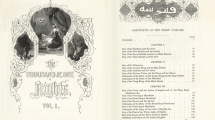Abstract
Jos Motmans tells the story about a small scenario project he facilitated between October 2001 and March 2003 in Tienen a small Flemish town, dealing with prejudice and cultural diversity centred on the Roma people. The story is inspired by a mindmap he made one year after the end of the scenario project. The map represents a sunflower, (see figure 1), with a heart and seven petals. Each part stands for a theme and they are all interlinked. The heart symbolizes the project and its context. Each petal represents a role or position relevant to the project and its progress. They all have a name, the first name of the person who took this role in this scenario project. And the flower stem is the link to the fertile soil of the art of scenario thinking. As he states: ‘It is the story of synchronicity and meaning in the first scenario project I facilitated in a (living) (real) world with (living) (real) people.’

Similar content being viewed by others
Notes
For more in depth information about the Roma in Europe, see: Dyer (2000), Vermeersch (2000), Meester (1992), European Roma Rights Center (ECCR). Available from http://www.errc.org/…
The issue of a cultural–historical approach in scenario projects is worked out more in depth in Chermack and van der Merwe (2003).
For more information about the situation of the Roma in Tienen and Belgium, see the article on Belgium in: ‘Roma Rights. Snapshots from around Europe, 1999, nr 4 or the website ERRC European Roma Rights Centre www.errc.org.
Here, the metaphor of ‘potential space’ is used to symbolize the tremendous opportunities created by the foundation of the state Israel after World War II. The fact that at this moment the way Jews give content to their ‘potential space’ is controversial only illustrates that potential space and play can get positive and negative content as well.
This link between Winnicott (potential space) and Vygotsky (zone of proximal development) is worked out more in depth by Steyaert (1995, 464).
On 4 October 1999, more than 70 Roma were put on the plane to Slovakia by the Belgium government, an action condemned by the European Court in 2002.
References
Buber M. (2000) I and Thou, New York: Scribner Classics.
Chermack T.J. and L. van der Merwe (2003) ‘The Role of Constructivist Learning in Scenario Planning’, Futures 35: 445–460.
de Geus A. (1999) The Living Company. Growth, Learning and Longevity in Business (first paperback edition), London: Nicholas Brealey Publishing.
Dyer G. (2000) ‘Gipsy Nation’, London, Independent Journalist, 4 August 2000.
Grolnick S.A. (1990) The Work and Play of Winnicott, Norhvale: Jason Aronson.
Meester M. (1992) De stilte voor het vuur. Roma in Roemenië, Amsterdam: Meulenhoff.
Motmans J. (2004) Het gebruik van scenario's bij de opbouw van inzicht, dialoog en wederzijds leren in locale conflict situaties. Een case studie over ‘Kleurrijk Tienen’, dissertation presented to the Leadership Centre at the University of Kwazulu-Natal for the degree of Master of Commerce, Leadership studies.
Steyeart C. (1995) Perpetuating Entrepreneurship through Dialogue. A Social Constructionist View, dissertation for the Doctor's Degree in Psychology, Leuven, Katholieke Universiteit Leuven.
van Rees S . (1990) ‘Begrafenis van de manen. Gedichten van autistische kinderen.
Wack P. (1985) ‘The Gentle Art of Reperceiving’, Harvard Business Review, September–October: 73–89 and November–December: 139–150.
Winnicott D.W. (2002) Playing and Reality (reprint), Hove and New York: Brunner-Routledge.
Vermeersch P. (2000) ‘De vluchtelingenproblematiek en het beeld van Centraal- en Oost-Europese Roma’, Streven Maandblad, June 2000.
Rights and permissions
About this article
Cite this article
Motmans, J. The ‘Colourful Tienen’: Who joins? Who learns?. Development 47, 110–114 (2004). https://doi.org/10.1057/palgrave.development.1100078
Published:
Issue Date:
DOI: https://doi.org/10.1057/palgrave.development.1100078




